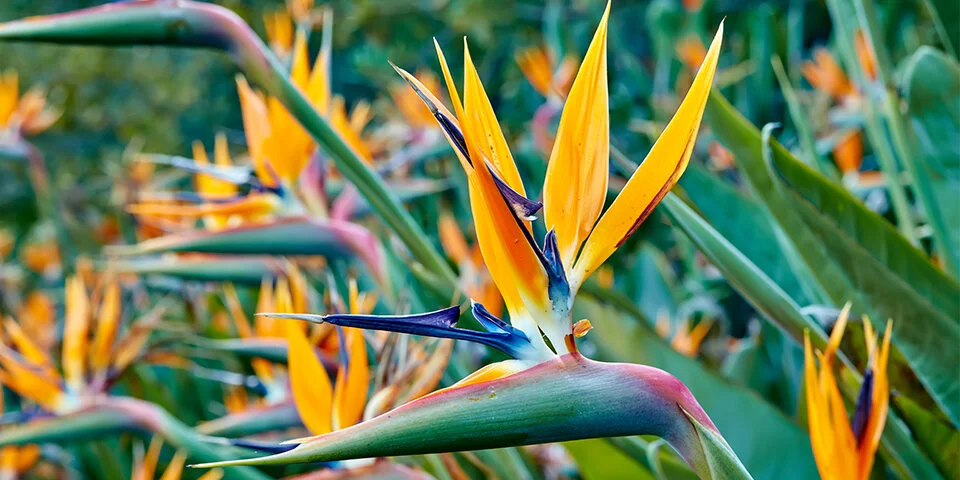Peas have been a major food crop for both humans and livestock since Neolithic times. Most of the world’s crop is in the form of ‘field peas,’ grown to be consumed as the dried seed. The plants originally grew as weak-stemmed vines, which needed support to prevent them from ‘lodging’ or blowing over in windy conditions. Lodging made the pods more difficult to harvest and more susceptible to damage by pests if they were in contact with the ground, but providing support added a significant expense to the grower.
Plants with the recessive afila or ‘af’ gene were shorter than normal and produced fewer leaves but an abundance of tendrils. The afila plants were much less susceptible to lodging because of their reduced height and because the plants could support each other by interlocking their many tendrils. With their smaller size and leaf surface, the afila plants were also less productive, but over the last few decades the breeders have developed varieties with greater yield and improved disease resistance.
English or garden peas, developed to be eaten green, were a more recent introduction first described in Western Europe in the 17th century. They account for only a small fraction of the total production of Pisum sativum, but in the last few years several afila varieties of garden peas have been introduced. I have grown two varieties of afila peas, not because I was looking for them particularly, but because all the varieties resistant to races 1 and 2 of Fusarium oxysporum f.sp. pisi (Fop) that I could find were afila.
Because “resistance to Fop is conferred by single race-specific genes,” we shall probably see resistant varieties of taller vining garden peas before long. The breeders will be kept busy because races 5 and 6 are geographically widespread and are already economically important in the Pacific Northwest. It should be possible with gene editing technology to whip up an afila plant resistant to as many races of Fop as you wish in short order. Public resistance to GMO products would make that difficult but, once the genes have been identified, it shouldn’t take too long to construct a bespoke plant by traditional methods of propagation.
I now have two years of experience with afila garden peas, mainly with PLS 560 from Territorial Seeds, but also with one planting of PLS 566 from Harris Seeds. Pure Line Seeds is a family-owned wholesaler breeding some of their own varieties (presumably those called PLS) and distributing others from selected growers in the Columbia River Basin.
Of the five plantings I have made, only one has been really successful, but I have learnt a few things that will, I believe, ensure better results in the future. I usually made a planting of around 50 seeds for vining varieties like ‘Legacy’ and ‘Bolero.’ If they escaped disease, they would produce enough of a harvest to supply half a dozen or more meals for the two of us plus a big mess of pea soup. The afila plants are small, most of them no more than 18 inches. The healthy plants set pods at about the same rate per inch of height as the vining varieties, which means that you’ll need to plant close to twice as many seeds to get the same yield.
The two varieties I have tried seem less tolerant of warm weather than the vining types I have grown in the past. Plantings started at the end of August and in mid-September are less happy than one begun in mid-October. Finally, the plants need to be kept off the ground. Those that fail to connect their tendrils to a neighbour show small and deformed pods, so some help may be needed to guide them in the right direction. The October planting was about 80 seeds which are now flowering and promise an abundant harvest. Part of the success of the later planting may be explained by the fact that Fop doesn’t flourish when the temperature is below 70°. The resistant strains are described as “highly resistant,” but the resistance may not be absolute in our intensely planted and pathogen-rich raised beds. The survivors of the earlier plantings are showing signs of recovery, now setting additional flowers and pods.
For years I started pea seeds between two layers of damp paper towels, setting them out when the root reached about a half-inch in length. I’ve turned to another method that is even more successful. I start 16 seeds in potting soil in a 3-inch plastic container, setting the plants out when they are a couple of inches in height. At that stage the roots separate easily, though the tendrils of the afila varieties may need a bit of disentangling.
So, how do these varieties rate for taste? I’d give PLS 560 a B+ and have held judgment of PLS 566 because the only planting that I’ve matured was grown under adverse conditions. The Cornell Cooperative Extension made reports on pea variety trials in 2020 and 2021. In 2020 they rated PLS 560 at 4.5/5.0 for taste but in 2021 gave it only 3.8. PLS 566 rated 4.0 and 3.5 in the same trials. The top-rated variety in 2020, scoring 5.0, was PLS 534, but in 2021 it scored only 3.8. Evidently tastiness is susceptible to cultural conditions and perhaps also to differences in the tasting panels.
The photo above shows the self-supporting afila, PLS 560, on the left and the snap pea, Cascadia with its support.

